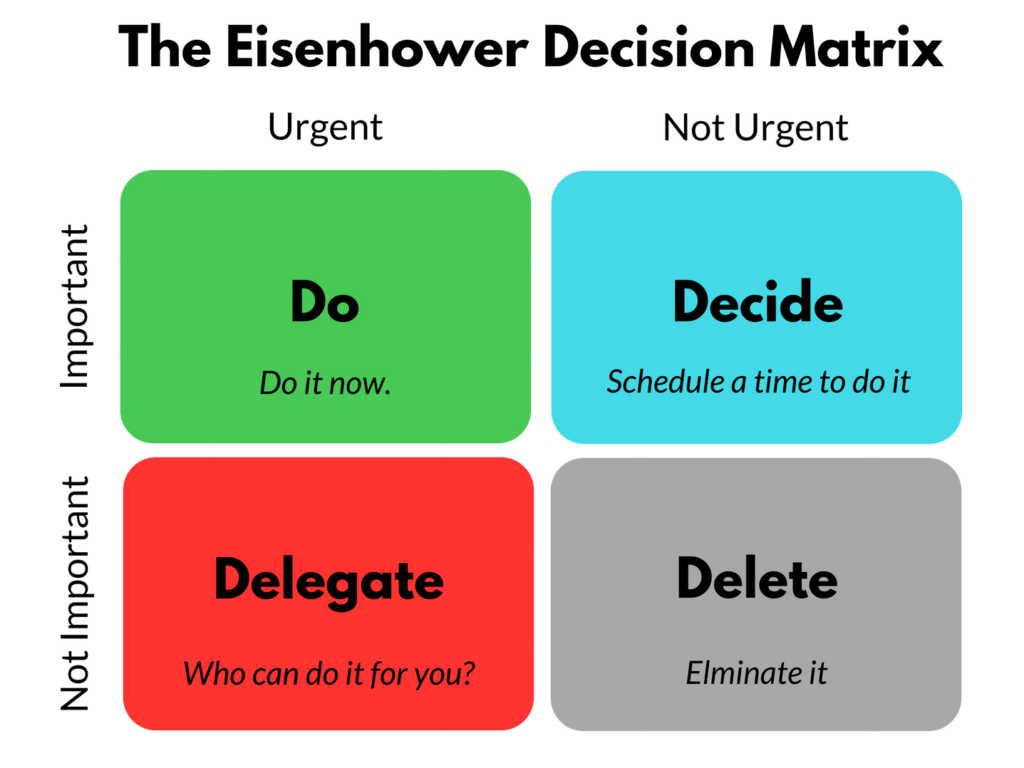Focusing on the Big Levers
Archimedes said, “Give me a long enough lever and a fulcrum on which to place it, and I shall move the world.” Leverage is a topic that’s been written about a lot lately. According to Naval Ravikant, there are 4 primary types of leverage which include capital, labor, code, and media. This article is going to be about finding the biggest levers and focusing on them in a business/professional setting, whether or not they cleanly fall into one of those four buckets.
Personal story: I had a coaching conversation last week with one of my employees. He admits to, and has received feedback, that he can at times be unresponsive and let things slip through the cracks. These are typically the tasks he perceives as being “beneath him” and not the needle-movers for the business. He prefers to spend his time on the more complex, bigger impact items. I provided coaching around staying organized, delegation, responding even if it’s just to acknowledge you received the email and are working on it…the typical stuff.
Reflecting on this discussion a bit further, I think the coaching was generally on point. Being unresponsive and letting things slip through the cracks can have a ripple effect through an organization and be destructive. However the more I thought about it, the more I realized that the inverse of this is probably my biggest professional development opportunity. I’m impeccable at staying organized, being responsive to people, demonstrating reliability, and not letting anything slip through the cracks. But there comes a point where this can be at the expense of the highest leverage activities I could be spending my time on, and there lies the opportunity.
At its core, I think this is anchored in my personality type. I’m an ENTJ according to Myers-Briggs. That last letter J refers to Judging (as opposed to P for Perceiving). “Judgers approach life in a structured, organized and carefully calibrated way, creating short- and long-term plans to help them achieve their goals. Schedules and “to-do” lists are comforting to them. They prefer knowing what they are getting into and feel frustrated in situations of ambiguity and change.”1
I love my “to-do” lists, schedule, and keeping my inbox clean. This generally serves me well. But the risk is I get hooked on the good feeling I get from checking things off my list and other forms of “quick wins”, at the expense of bigger priorities that really move the needle. For most people, laziness looks like not getting things done and checking them off their list. In a strange way for me laziness is actually doing that, but it’s lazy thinking and prioritization. This is especially important to compensate for in my current role where I lead a large ~$450M category, and my role is intended to be strategic.
So with that self-awareness, what can I do about it? It starts with determining what those big priorities are. There are a variety of frameworks for this. In EOS, it starts with your V/TO and results in Quarterly Rocks. In Lean you use the A3 template to define your target state and an action plan to get there, along with how you’ll measure progress. The nice thing about these frameworks is they allow you to breakdown the larger, longer term goal into bite size chunks. This is especially key for me, and almost a hack because if I can get it onto my to-do list, I can let my natural tendency takeover and it’ll get done. But it’s the hard work of defining the strategy and thinking through the biggest levers that I need to be sure not to avoid.
So I’m working on defining that strategy for my category, and determining the highest and best use of my time. At the same time I’m trying to give myself permission to be a little less responsive, and let lower impact items either linger on the “to-do” list a bit longer, or delegate them, or drop them entirely. What goes around comes around, because one of the first personal development books I ever read was “The 7 Habits of Highly Effective People” by the late Stephen Covey. Among other things, he writes about the Eisenhower Matrix shown below. I need to ensure I’m allocating the appropriate amount of time and energy to that upper-right quadrant of important but not urgent. I think this is one of those timeless lessons that is as true now as it was when I first stumbled across it.
Thanks for reading! The last couple weeks have been especially busy with moving from one rental to another in North Carolina, and a business trip. So I don’t the normal article/movie/book/podcast recommendations. But I will leave you with a longer quote I ran across that I really liked. It speaks to a long-term view, persistence, and staying true to your nature.
Quote - To a river, as to any natural force, an obstruction is merely an opportunity. For the river's nature is to flow; it is not just spatial in dimension, but temporal as well. All things must yield to the impulse of the water in time, if not today then tomorrow or in a thousand years. If its way is obstructed then it goes around the obstruction or under it or over it and, flowing past it, wears it away. Men may dam it and say that they have made a lake, but it will still be a river. It will keep its nature and bide its time, like a caged wild animal alert for the slightest opening. In time it will have its way; the dam like the ancient cliffs will be carried away piecemeal in the currents - Wendell Berry





